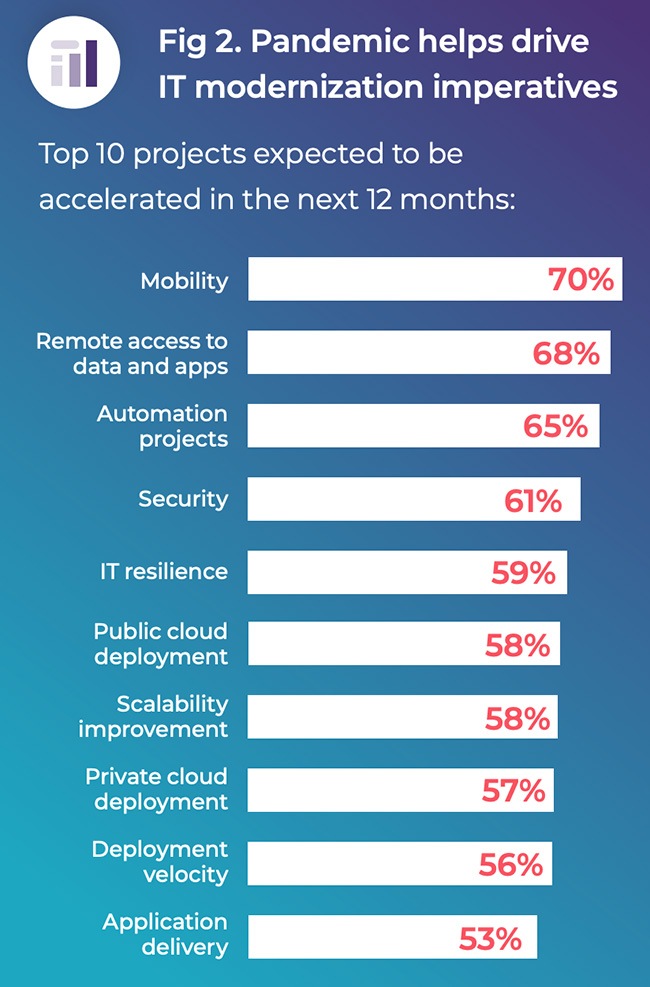A look at enterprise network and application modernization efforts
80% of organizations are struggling to reach application delivery requirements with their existing infrastructure. But, amid pandemic concerns, efforts to modernize networks and applications to address this challenge are accelerating with 83% reporting budget increases for these initiatives over the next three years, NS1 reveals.

“Modernization was already on the radar for many organizations, but the pandemic has shocked the system and created a heightened sense of urgency,” said Kris Beevers, CEO, NS1. “Our research shows that IT leaders are accelerating projects aimed to increase efficiencies and business agility, improve application performance and user experiences, and drive additional revenue.”
Challenges to enterprise network and application modernization efforts
Within the broad scope of IT modernization, companies are prioritizing transformation initiatives for mobility (70%), remote data access (68%), automation (65%), security (61%), and IT resilience (60%).
Other areas where efforts are accelerating include public and private cloud deployments (58% and 57% respectively), improvements to scalability (58%) and deployment velocity (56%).
And yet, even with the heightened sense of urgency and budget behind them, survey respondents reported facing a number of obstacles in their IT modernization projects. Although four out of five acknowledge some progress with modernization, only 8% report that they have achieved their initial objectives, and 28% report “significant progress” (75% or greater).
Challenges to modernization include a talent and skills gap and competing priorities (37% each), as well as aging networks (35%) and the outdated, inflexible organizational structures that often come with them.
“Static, legacy tech drags down modernization efforts because it lacks the flexibility and agility necessary to support dynamic, scalable applications and IT environments,” added Beevers.
“Successful digital transformation starts with the underlying enterprise network and application infrastructure — DNS, DHCP and IP address management. When purpose-built for speed, reliability and scalability, these foundational technologies are critical in expediting modernization projects, automating network management tasks, and increasing efficiency and operational velocity in complex heterogeneous environments.”
Adoption and trends in the modern IT landscape
The study examined the adoption of modern technology across mid- to large-sized companies and uncovered the following trends.
The study found that 45% of respondents are currently using DDI, and another 48% plan to adopt the technology within 12 months. Adopters reported the most common use cases to be accelerating service discovery in microservices environments (60%) and connecting cloud and on-premise applications and data (56%).

Those with plans to implement DDI cited the following use cases as the most appealing:
- Connecting cloud and on-premise applications and data (59%)
- Accelerating application delivery (55%)
- Automating network management tasks (54%)
- Accelerating service discovery in microservices environments (42%)
- Controlling costs associated with application and network management (40%)
Modern application stack
Nearly all companies are adopting modern application stack solutions, many of which are aimed directly at addressing network and application performance requirements, including:
- Network monitoring tools, which 96% of respondents were either already implementing or planning to, within 12 months
- Public/private cloud, multi-cloud – 94%
- Automation and orchestration solutions – 93%
- Intelligent traffic management – 87%
- Multi-CDN – 85%